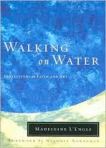When I was a good bit younger, I had determined to write literary fiction. Why? Well, for one thing, that seemed to be the only fiction respected by the so-called “literati.” For another, it was the kind of fiction to which I was most often drawn . . . unless I was traveling. For airplane rides and long car trips or boat cruises, I indulged in what I referred to as my “junk reading.” Spy novels, mysteries and thrillers, particularly if they revolved around World War II. Think of Ken Follett or Jack Higgins.
Then I wrote my first novel. Surprise! It came out a lot more like my so-called “junk reading” than works by the likes of Barbara Kingsolver or Joyce Carol Oates. A page-turner rather than a book to be savored. While I felt proud of my accomplishment and subsequent awards seemed to verify its worth, deep inside I resolved to make my next work more “literary.”
I completed my second novel last year and it’s currently being considered for publication. Though it does have more literary elements—some poetry, symbolism, etc.—than did my first work, all in all, it still would likely be classified as genre fiction. Upmarket, perhaps, but still genre. And now I’m halfway through my third. This one is definitely genre fiction. In fact, I’ve crossed over into an entirely different genre—YA fantasy.
I felt guilty about giving up my initial goal until I came across a fascinating essay by David Mamet entitled “The Humble Genre Novel, Sometimes Full of Genius.” It’s in a great anthology of essays put out by The New York Times called, “Writers [on Writing].”
Mamet points out that “for the past thirty years the greatest novelists writing in English have been genre writers: John Le Carré, George Higgins and Patrick O’Brian. Each year, of course, found the press discovering some writer whose style, provenance and choice of theme it found endearing. These usually trig, slim tomes shared a wistful and self-commendatory confusion at the multiplicity of life and stank of Art. But the genre writers wrote without sentimentality; their prose was concise and perceptive; in it the reader sees the life of which they wrote, rather than the writer’s ‘technique.’” This coming from a Pulitzer Prize-winning playwright! One of the “literati.”
As he puts it, “the purpose of literature is to Delight. To create or endorse the Scholastic is a craven desire. It may yield a low-level self-satisfaction, but how can this compare with our joy at great, generous writing? With our joy of discovery of worth in the simple and straightforward? Is this Jingoism? The use of the term’s a wish to side with the powerful, the Curator, the Editor. The schoolmaster’s bad enough in the schoolroom; I prefer to keep him out of my bookshelf.”
Many of today’s so-called classics were genre pieces: Huckleberry Finn, Don Quixote, even War and Peace. So, whether I’m writing women’s fiction, mainstream fiction, or even young adult fantasy, I will no longer consider myself second-class. It all comes down to the story, in the end, and genre writers are brilliant at telling a story. I will never again call such stories “junk reading.”



